Canvas LMS (Learning Management System) is a comprehensive and user-friendly platform designed to facilitate online education and training. Developed by Instructure, Canvas offers a seamless and interactive learning experience for both educators and learners. With its intuitive interface, educators can easily create, manage, and deliver courses, assignments, and assessments. Canvas supports various multimedia formats, collaboration tools, and communication channels, fostering engagement and participation among students. Its robust gradebook and analytics provide real-time insights into student performance, allowing educators to offer personalized support and track progress effectively. Additionally, Canvas offers mobile apps for learning on the go. Trusted by thousands of educational institutions worldwide, Canvas LMS empowers educators to create dynamic, interactive, and accessible learning environments, fostering a culture of continuous learning and growth.
What is an interactive quiz?
An interactive quiz is a form of assessment or knowledge evaluation that engages participants actively, often in an online or digital format. Unlike traditional quizzes where participants merely answer questions passively, interactive quizzes incorporate various elements to make the experience more engaging and dynamic.
Key features of an interactive quiz include:
Multiple question types: Interactive quizzes often include diverse question formats, such as multiple-choice, true/false, fill-in-the-blanks, matching, drag-and-drop, or essay questions.
Instant feedback: Participants receive immediate feedback on their answers, allowing them to understand their performance and learn from their mistakes.
Timed elements: Some interactive quizzes have time limits for each question or the entire quiz, adding an element of challenge and excitement.
Gamification: Quizzes may incorporate gamified elements, such as points, badges, leaderboards, or rewards, to motivate participants and enhance the competitive aspect.
Multimedia elements: Interactive quizzes often include images, videos, or audio clips to make questions more visually appealing and engaging.
Interactivity: Participants may have to interact with the quiz interface by dragging, clicking, or sorting elements, making the experience more hands-on.
Here are some of the key advantages of using interactive quizzes:
Enhanced Engagement: Interactive quizzes actively involve participants, making the learning or assessment process more enjoyable and stimulating. The use of multimedia elements, gamification, and interactive features captures participants’ attention and encourages active participation.
Active Learning:v By requiring participants to answer questions and provide immediate feedback, interactive quizzes promote active learning. Participants are more likely to retain information when they actively engage with the content.
Real-Time Feedback: Interactive quizzes provide instant feedback to participants, allowing them to assess their understanding and identify areas for improvement. This immediate feedback helps reinforce learning and motivates participants to continue their learning journey.
Personalized Learning: Some interactive quizzes use adaptive technology to tailor questions based on participants’ responses. This personalized approach ensures that participants receive questions that match their current level of knowledge, optimizing the learning experience.
Data Insights: Interactive quizzes generate valuable data on participants’ performance, enabling instructors, trainers, or marketers to analyze trends, identify learning gaps, and make data-driven decisions to improve future content and strategies.
In this article
- Part 1: Step-by-step guide about creating an interactive exam in Canvas LMS
- Part 2: OnlineExamMaker – A free Canvas alternative online quiz tool
- Part 3: How to make an interactive quiz using OnlineExamMaker
Step-by-step guide about creating an interactive exam in Canvas LMS
Step 1: Planning the Exam
Before diving into the technical aspects of creating the exam, it’s essential to have a clear plan in mind. Decide on the exam format, the number and type of questions, and the duration of the exam. Consider what kind of interactions you want to include, such as multiple-choice questions, fill-in-the-blanks, or essay questions. Make sure that the exam aligns with the learning objectives of the course.
Step 2: Create an Assignment in Canvas
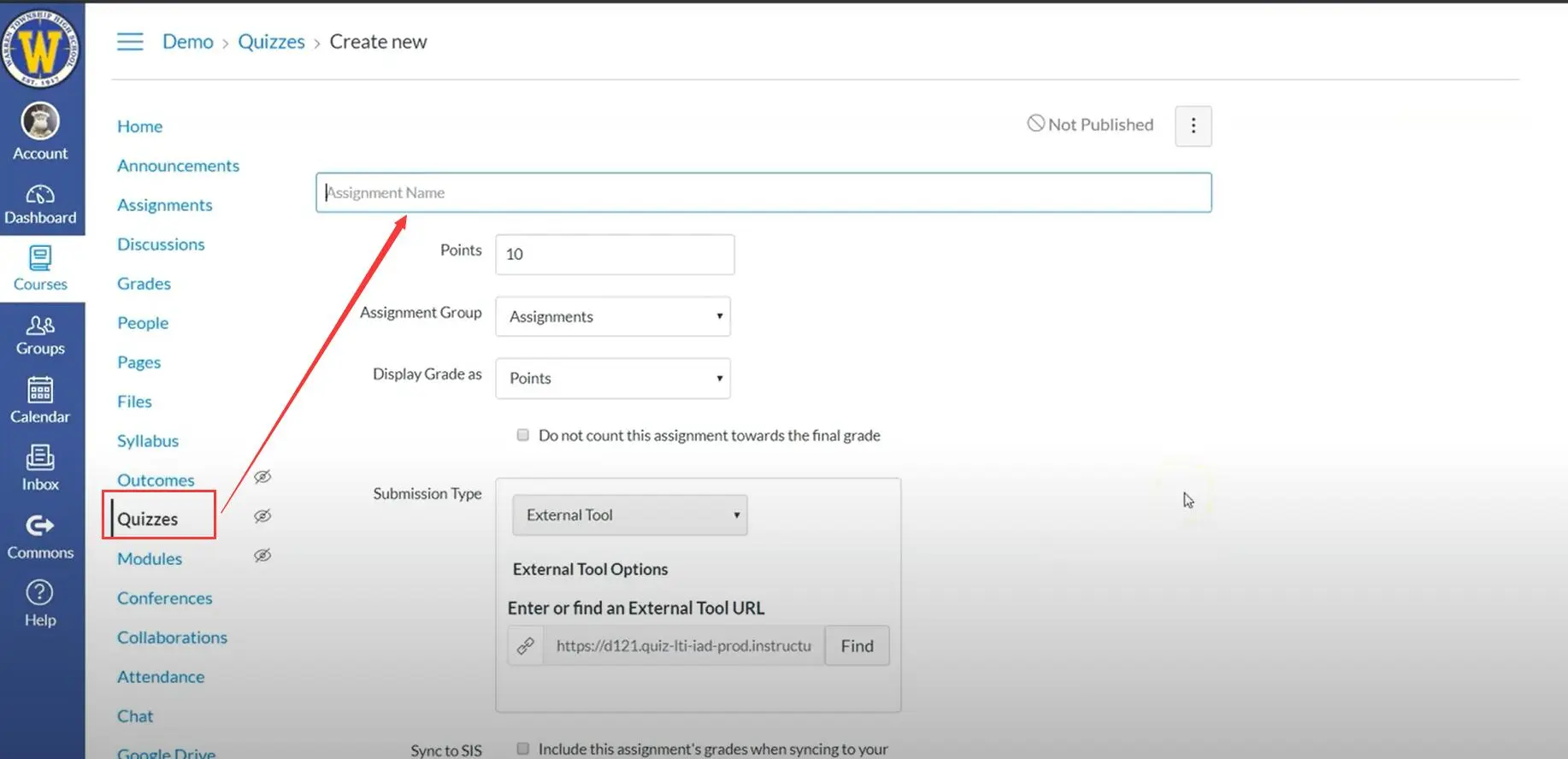
1. Log in to your Canvas account as an instructor.
2. Navigate to the course where you want to add the exam.
3. Click on “Assignments” in the left-hand course navigation menu.
4. Click the “+ Assignment” button to create a new assignment.
5. Provide a descriptive title for the exam and add any necessary instructions in the content area.
Step 3: Set Up the Assignment Details
1. In the “Submission Type” section, choose “Online” as the submission type.
2. Select “Quiz” as the online entry options.
3. Set the due date and time for the exam.
4. Decide whether to assign a grade to the exam immediately or review and grade it manually later.
5. Adjust other settings like availability dates, time limits, and additional submission attempts if needed.
Step 4: Building the Quiz Questions
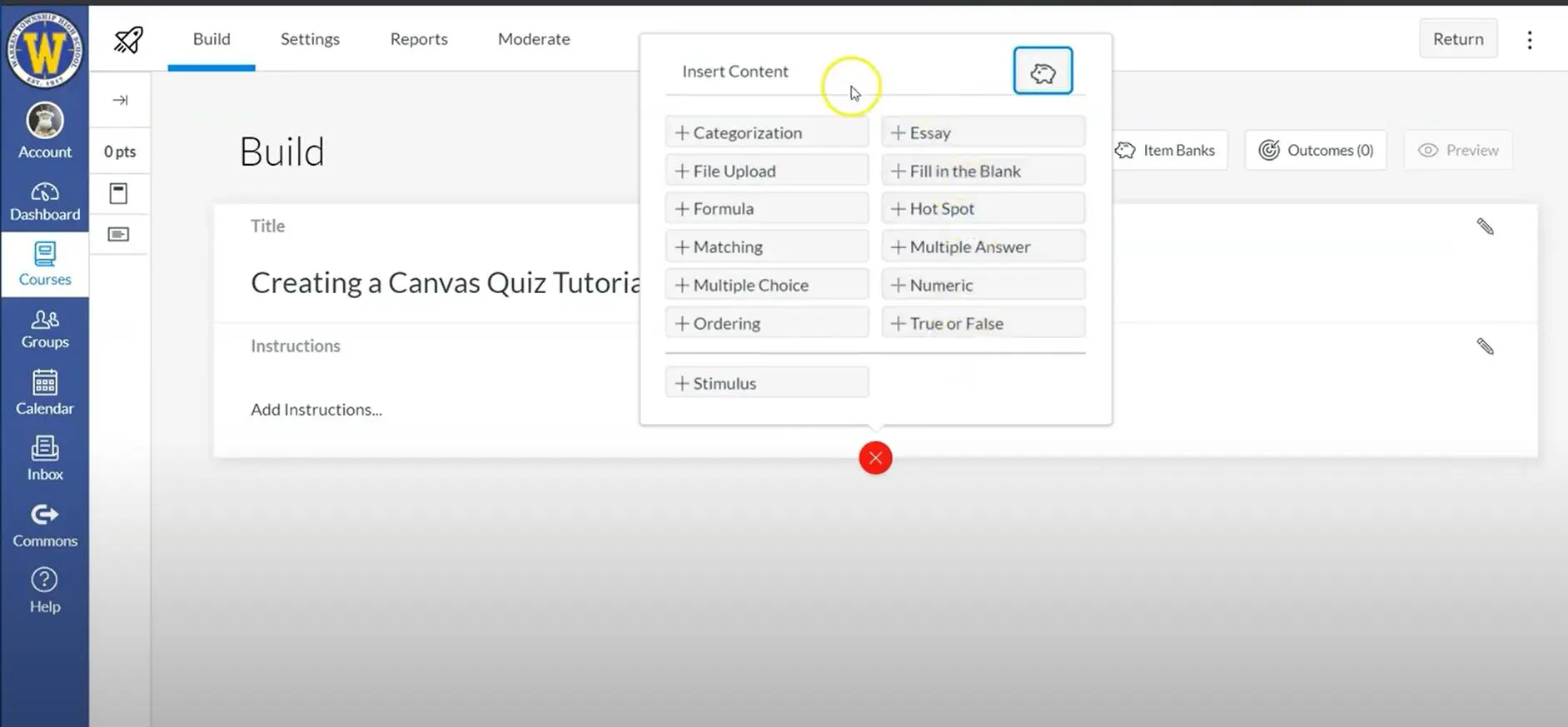
1. In the assignment creation window, click the “Questions” tab.
2. Click the “+ New Question” button to start adding questions to the exam.
3. Choose the question type from the options provided, such as multiple-choice, true/false, fill-in-the-blanks, or essay.
4. Enter the question text and the possible answers (for multiple-choice questions).
5. Indicate the correct answer(s) or assign points to each question (for essay questions).
Step 5: Enhance Interactivity with Different Question Types
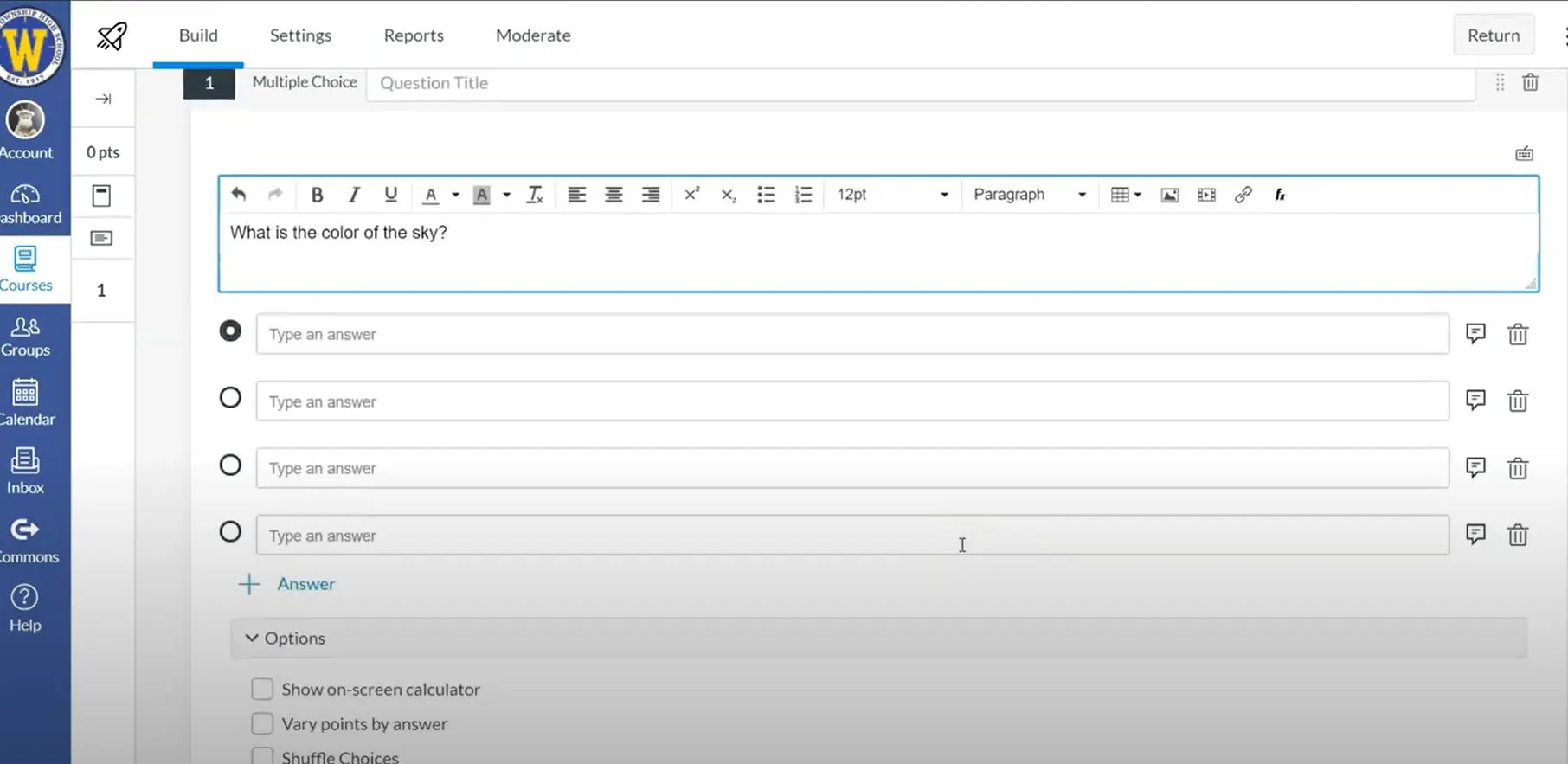
1. Mix different question types to make the exam more engaging and challenging for students.
2. Use multiple-choice questions for quick assessments and knowledge recall.
3. Incorporate fill-in-the-blanks questions to test specific facts or terms.
4. Include essay questions to assess critical thinking and the ability to articulate ideas.
Step 6: Use Question Banks (Optional)
1. To create a more dynamic exam, you can use question banks in Canvas.
2. From the “Questions” tab, select “Find Questions” and then “Create a Question Bank.”
3. Add questions to the question bank and organize them by topic or difficulty level.
4. When creating the exam, choose the option to pull random questions from the question bank to provide a unique experience for each student.
Step 7: Enable Quiz Options
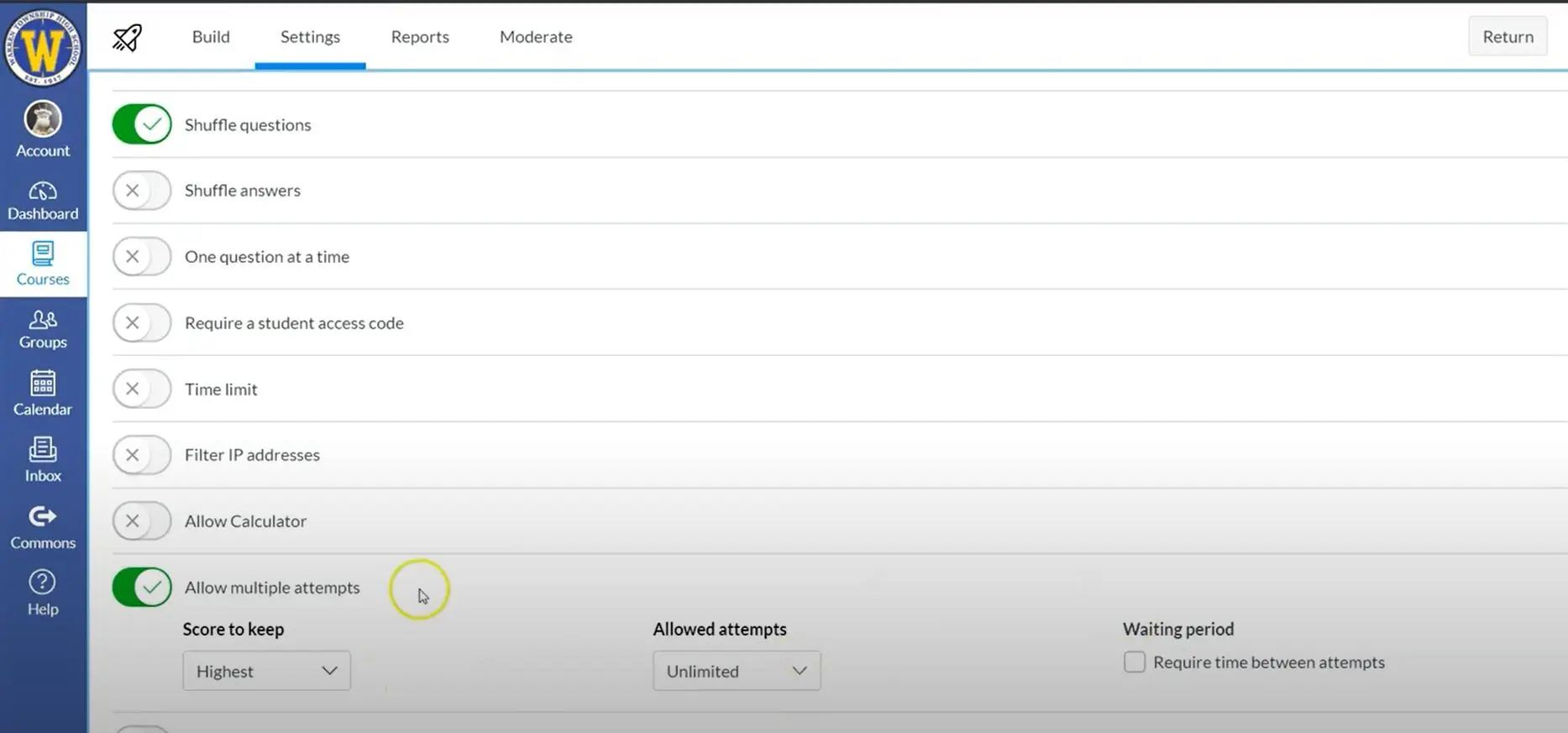
1. Go to the “Settings” tab while creating the quiz.
2. Adjust options such as time limit, number of attempts, and whether to shuffle questions or answers.
3. Decide whether to display correct answers and feedback after the exam or keep them hidden.
4. Review other settings like “Moderate This Quiz” for specific accommodations or adjustments.
Step 8: Preview the Exam
1. Before publishing the exam, preview it as a student to ensure everything appears as intended.
2. Click the “Preview” button at the top-right corner of the quiz creation page.
3. Answer some test questions as a student to verify question correctness and formatting.
Step 9: Publish the Interactive Exam
1. Once you are satisfied with the exam, click the “Save & Publish” button to make it available to your students.
2. Alternatively, you can save it as a draft and publish it later when you are ready.
Step 10: Communicate Exam Details to Students
1. Notify your students about the upcoming exam by sending announcements or messages through Canvas.
2. Remind them of the exam date, time, duration, and any other specific instructions.
Part 2: OnlineExamMaker – A free Canvas alternative online quiz tool
OnlineExamMaker is a versatile and user-friendly online tool that empowers educators, trainers, and businesses to create interactive quizzes and assessments. The software simplifies the process of designing and deploying quizzes to engage learners, improve knowledge retention, and assess performance.
Add rich media:
with OnlineExamMaker, you can easily enhance your quizzes by incorporating images, videos, and audio files to make the learning experience more engaging and interactive.
Ai-Based anti cheating technology:
AI-powered face ID verification technology enables the online exam system to capture the image of the exam taker via webcam, and compare it with the candidate’s profile photo which is uploaded before the exam.
Assessment and analytics:
OnlineExamMaker provides comprehensive assessment tools, enabling users to track learners’ progress, generate detailed reports, and identify knowledge gaps. Analytics help educators and trainers gain valuable insights, enabling them to optimize their teaching methods.
Create Your Next Quiz/Exam with OnlineExamMaker
Part 3: How to make an interactive quiz using OnlineExamMaker
Step 1: Go and use OnlineExamMaker.
Step 2: Create your interactive questions with a video and image in OnlineExamMaker question bank.
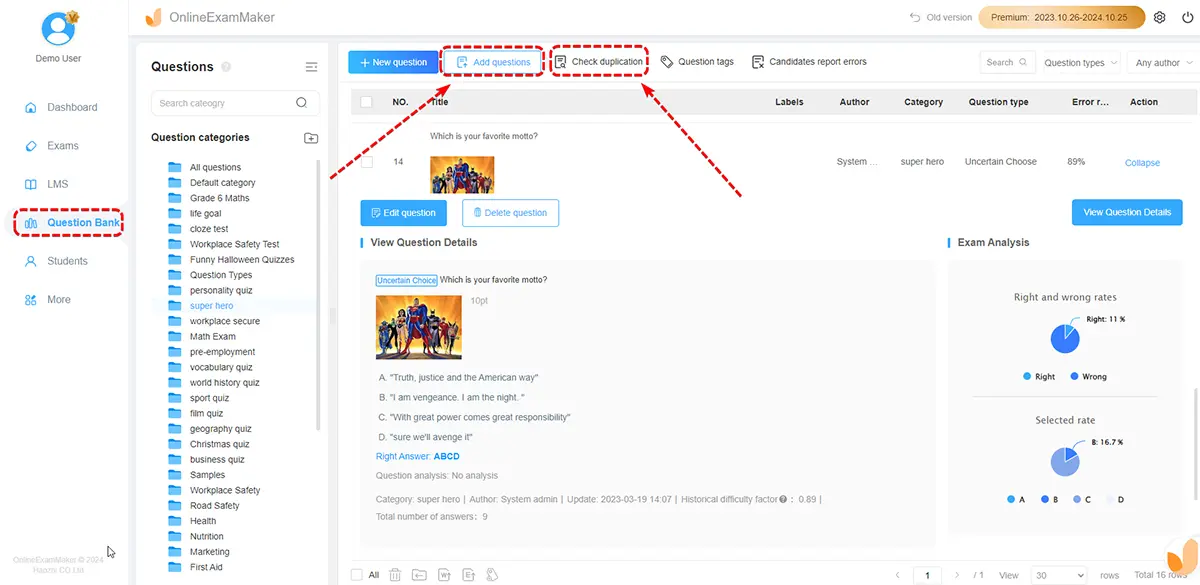
Step 3: Start the exam creation
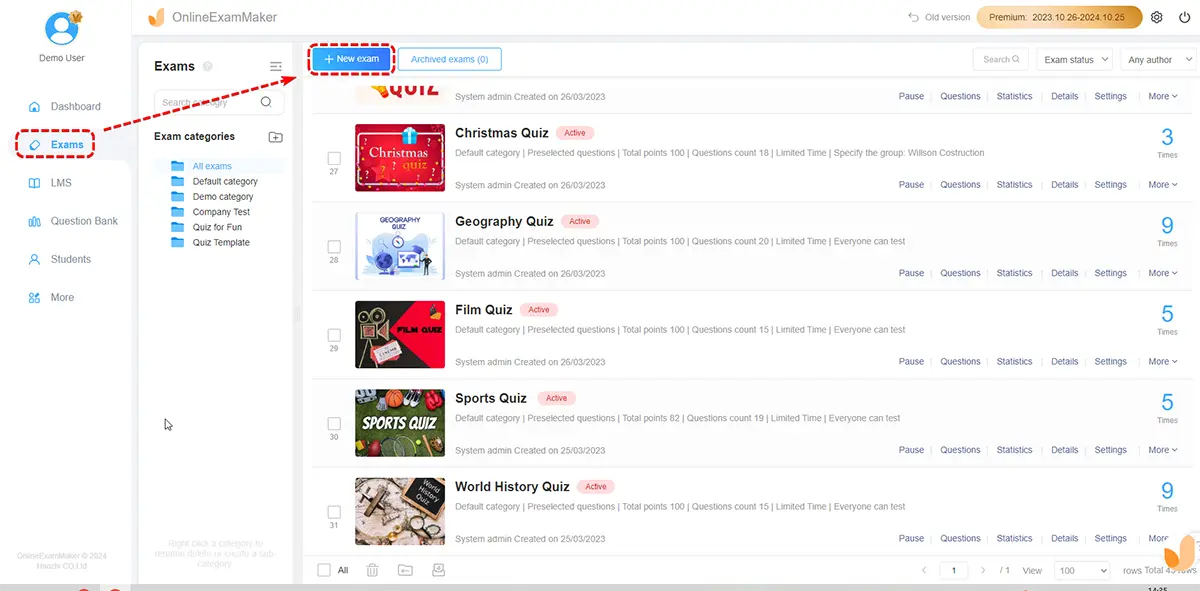
Step 4: Share your interactive quiz online
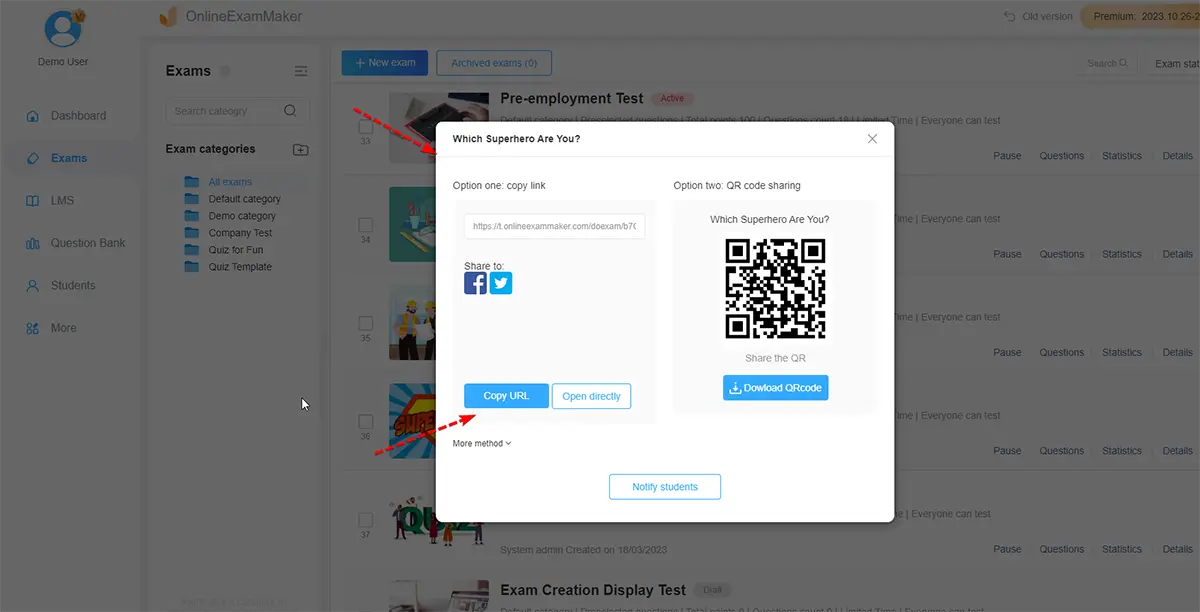
Read the full step-by-step guide on How to make an interactive quiz in OnlineExamMaker >
Conclusion:
Creating an interactive exam in Canvas enhances the learning experience for students and provides valuable insights for educators. By following this step-by-step guide, you can design and set up a comprehensive interactive exam that aligns with your course’s objectives, engages students, and effectively assesses their understanding. Remember to test the exam as a student before publishing it and communicate all relevant details to your students to ensure a smooth examination process. Happy teaching and assessing!